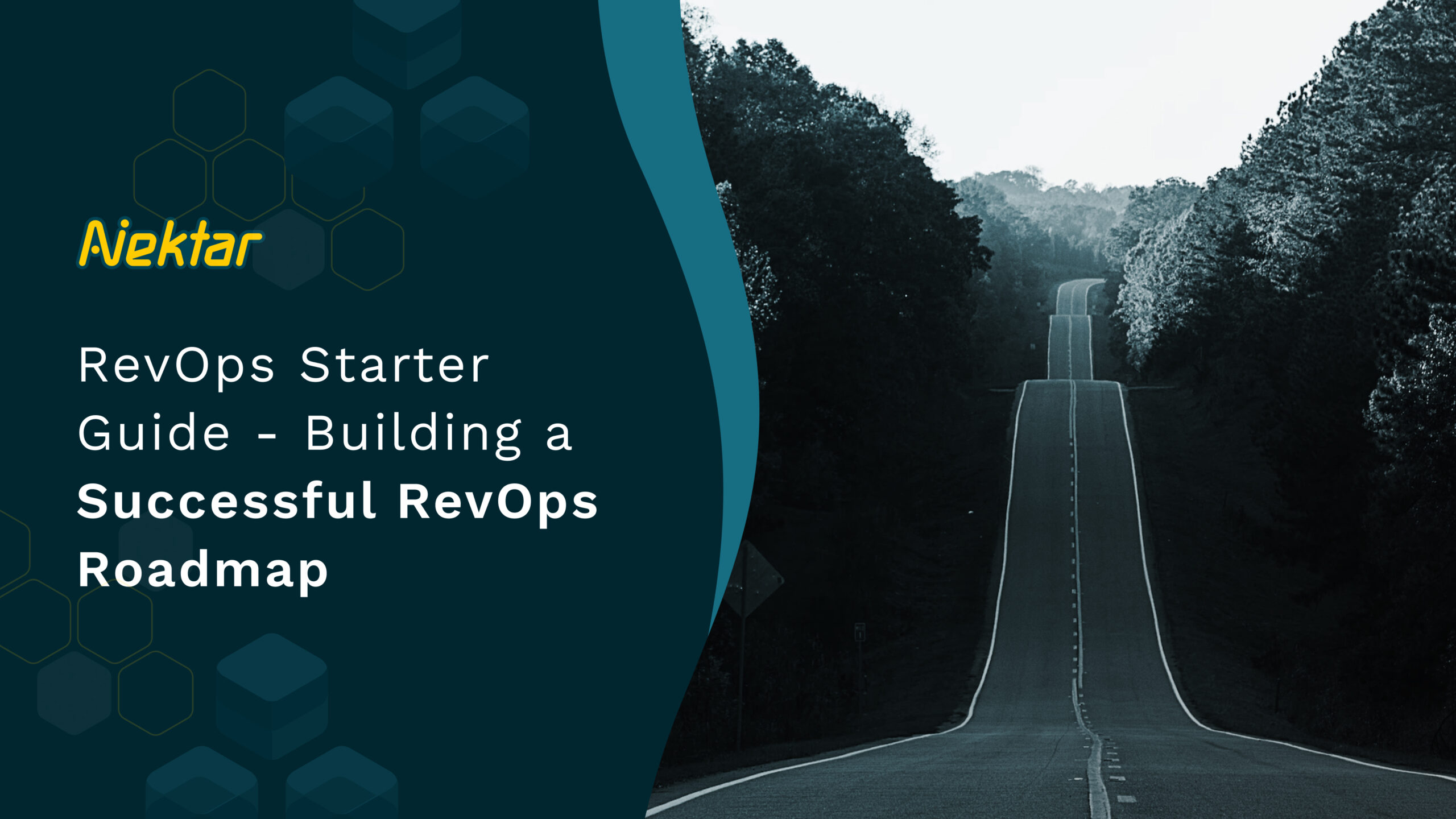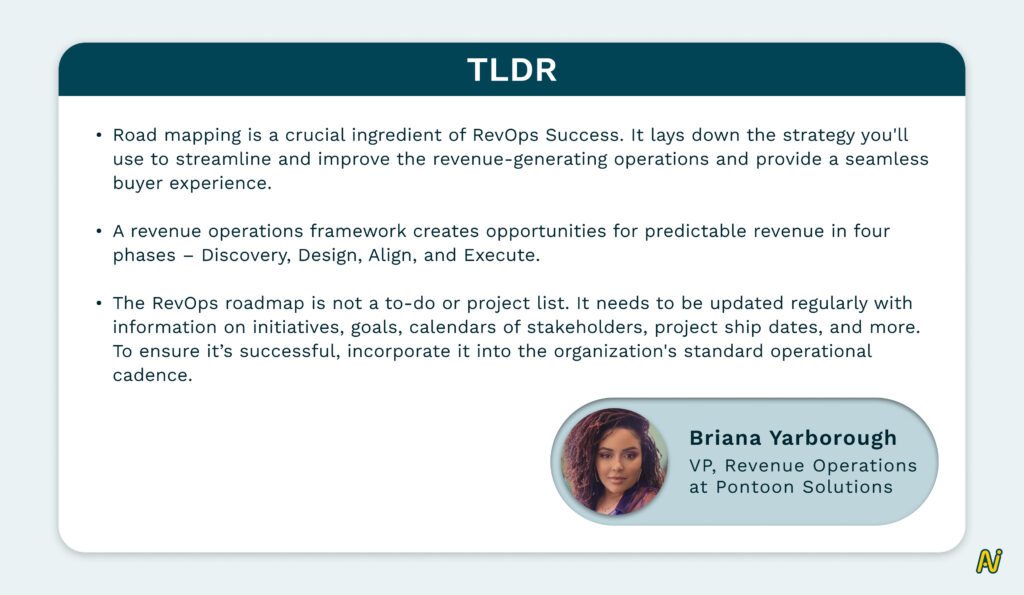
Consider a soccer game. We know the key parts of a team are the players and the coach. If we’re to draw a comparison, “sales” is the striker, while “RevOps” is the coach that analyzes, strategizes, and develops the game plan to win more games.
In the real world, RevOps helps your organization run an interconnected business. It streamlines the end-to-end revenue process and GTM functions. It, consequently, breaks down operational silos and improves efficiency and predictability.
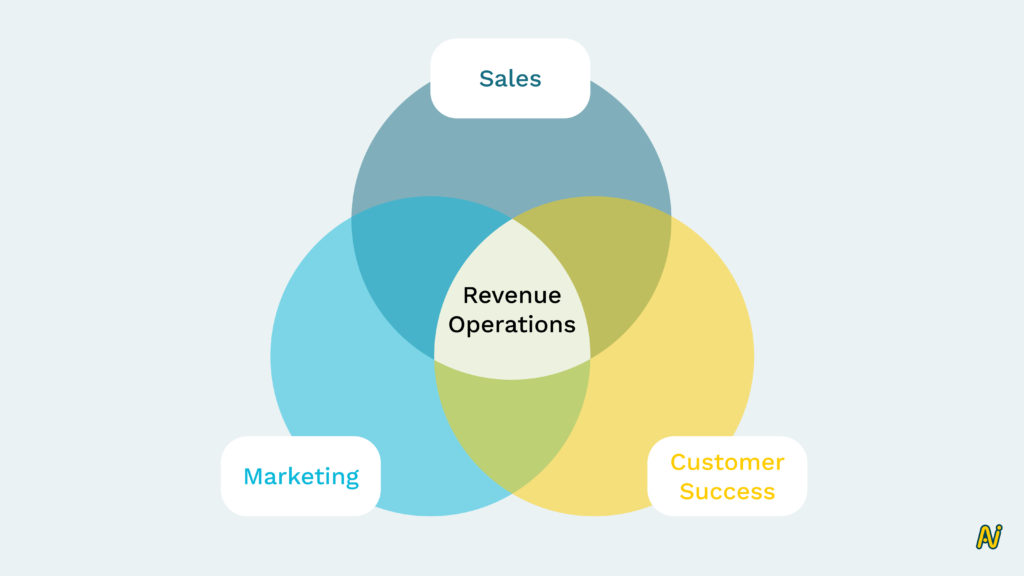
Businesses today are better understanding what RevOps is. And companies that have a RevOps function report 69% higher revenue growth and 59% improved win rates. It’s unsurprising, then, that 75% of the highest growth companies in the world plan to deploy a RevOps model by 2025.
With data’s growing significance and an increasingly complex tech stack, organizations are relying on RevOps to maximize revenue generation by strategically removing sales roadblocks. And align the entire organization towards a single goal – revenue generation.
That’s where a RevOps roadmap comes in.
If you don’t know how a RevOps roadmap helps, let the expert rein you in. We spoke to Briana Yarborough on The Revenue Lounge podcast to find out what is a RevOps framework and how businesses can create one.
Briana is a seasoned RevOps leader and co-founder of a RevOps solution in development. She serves as an advisor and executive leader for several high-growth startups. She’s also an active thought leader of RevOps in multiple communities and was most recently recognized as one of the Top 25 trailblazers in the space.
Look at the full discussion below and keep reading to know more about building a revenue operations roadmap.
What is a RevOps Roadmap?
A RevOps roadmap, in its simplest form, is a strategic visualization of your team’s upcoming projects.
- For leaders, it’s a goal-oriented tool communicating the clear scope of activities and outlining how these activities tie back to revenue. It enables managers to align the team and focus on activities that maximize the value of converting prospects to buyers.
- For reps, it is a source of truth to highlight “what” work is being done and “why.”
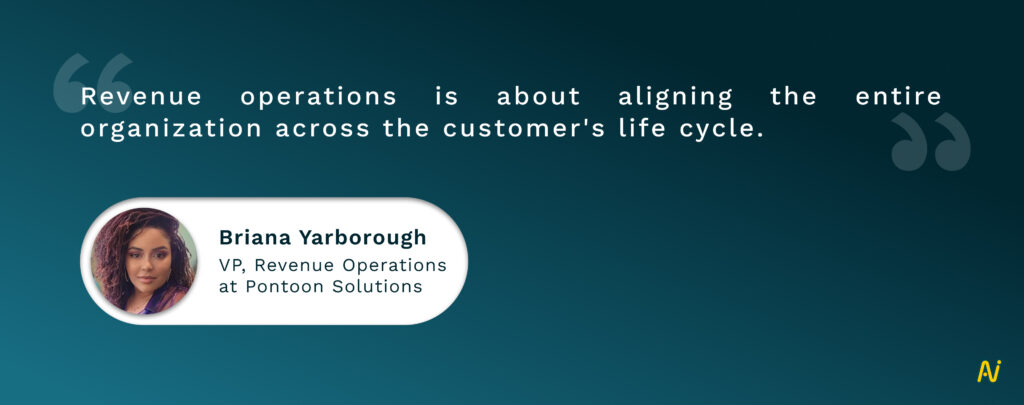
A RevOps roadmap can be followed seamlessly when everyone on the team understands it. Therefore, it’s important to get these 5 attributes right when creating an effective roadmap:
- Strategic: Focus areas and strategies
- Simple: Short, crisp, and visual
- Goal-oriented: Key deliverables and activities
- Easy to communicate: No jargon, straightforward
- Collaborative: Cross-functional cooperation
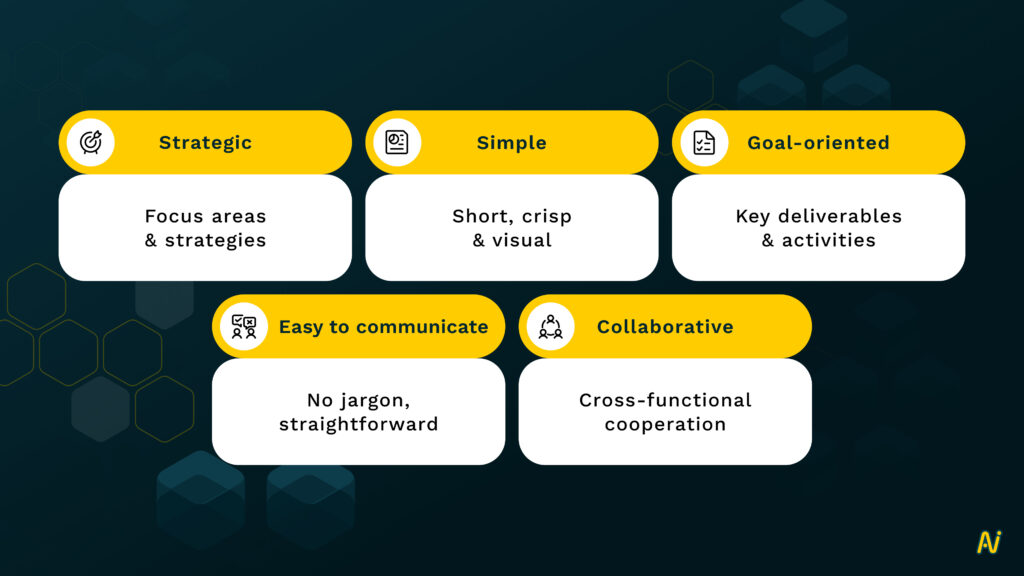
A RevOps Roadmap Clears The Path To Revenue Success

Adding a strategic layer of RevOps to your Go-to-market functions connects all activities which otherwise exist separately in a vacuum.
Here are some key reasons why you need a RevOps framework:
1. Prioritization
One of the primary benefits of having a RevOps roadmap is giving teams the necessary visibility. They can prioritize high-impact projects and focus on those that positively affect revenue. Teams can avoid off-plan requests that distract them from hitting predictable targets.
Additionally, it doesn’t let your weekly meetings run in divergent directions based on unhinged queries from Sales or Marketing teams.
2. Alignment
A GTM alignment is possible when teams improve buying experience by breaking down cross-functional silos.
Through sales and marketing alignment, the RevOps roadmap serves as a single source of truth to unify people, processes, and platforms. This alignment drives full-funnel accountability and helps you grasp inconsistencies and develop a baseline for improvement.
3. Understanding
A roadmap helps you dive deeply into the “why” behind revenue generation activities, including business goals and supporting resources.
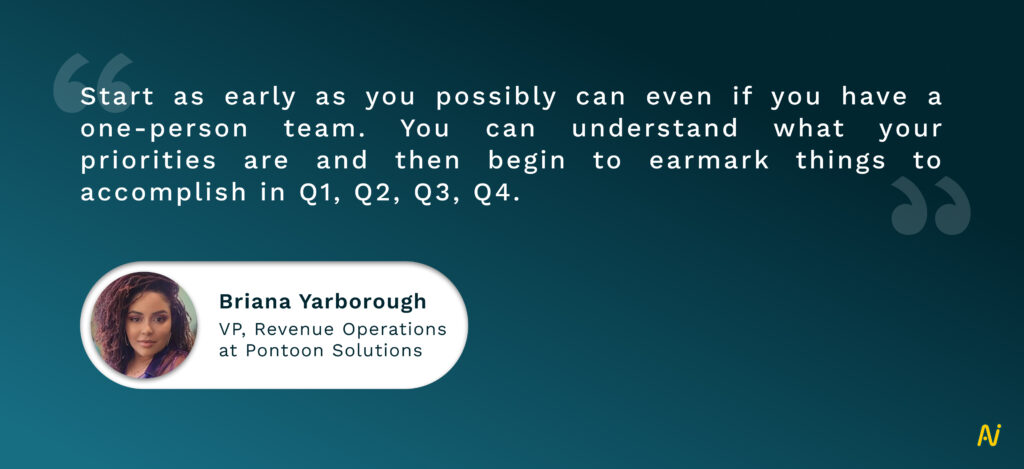
It provides clear definitions for and sets up the priority of each project, timeline, and initiative to measure progress effectively. Simultaneously, a RevOps roadmap restricts confusion among different departments.
Also, a roadmap empowers leaders to develop a vision for the business and ensure a solid system is in place to make this reality.
Now that you know what a RevOps roadmap is, are you inspired to build one for your business yet? Let us help.
Creating a Successful RevOps Roadmap
You can strategically and tactically achieve the roadmap to a successful RevOps plan with several key steps and considerations in place. For beginners, it’s best to start with the 4 primary phases.
But remember – a RevOps roadmap will differ for each organization based on its maturity stage and resources.
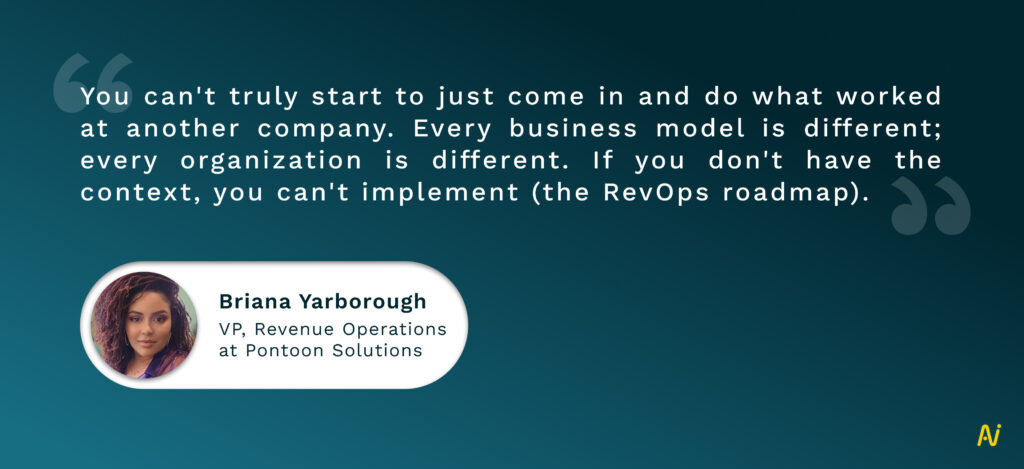
For this blog, we’ll dive into a summarized version of a beginner’s RevOps framework. You can check out the ultimate in-depth guide here.
Phase 1: Discover
Research is pivotal in understanding the problems in relevant operational areas before solving them. The initial analysis, aka discovery, seeks to lay down the “state of play” before designing the roadmap.
Discovery presents a comprehensive awareness of stakeholder expectations and gaps in the customer journey, starting with a thorough audit.
Use these questions to set the direction of your roadmap for stakeholders:
- Does each team clearly understand what they’re working on?
- How does the team determine the next best steps?
- Can each operational initiative be mapped back to a gap felt by customers?
- Is there a shared understanding of the company’s goals/values?
It not only helps identify the problem but also the reasons for the problem and the missing link. Discovery gives you insights to narrate the stories behind the roadmap more effectively. You can also incorporate this information into ongoing and forthcoming projects.
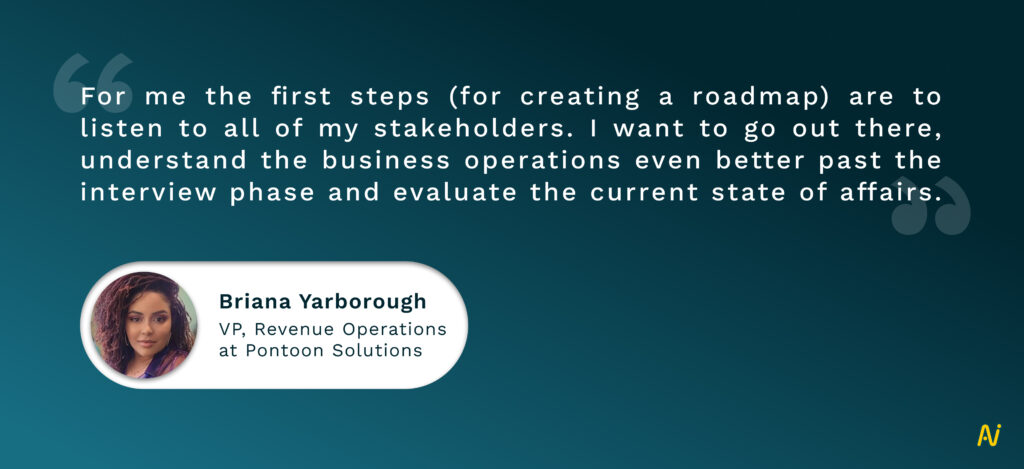
Interview relevant stakeholders such as the VP, managers, and executives in sales, marketing, and frontline operations. For this task, you can use surveys, one-on-one interactions, and team feedback.
Here are some key questions for individual stakeholders:
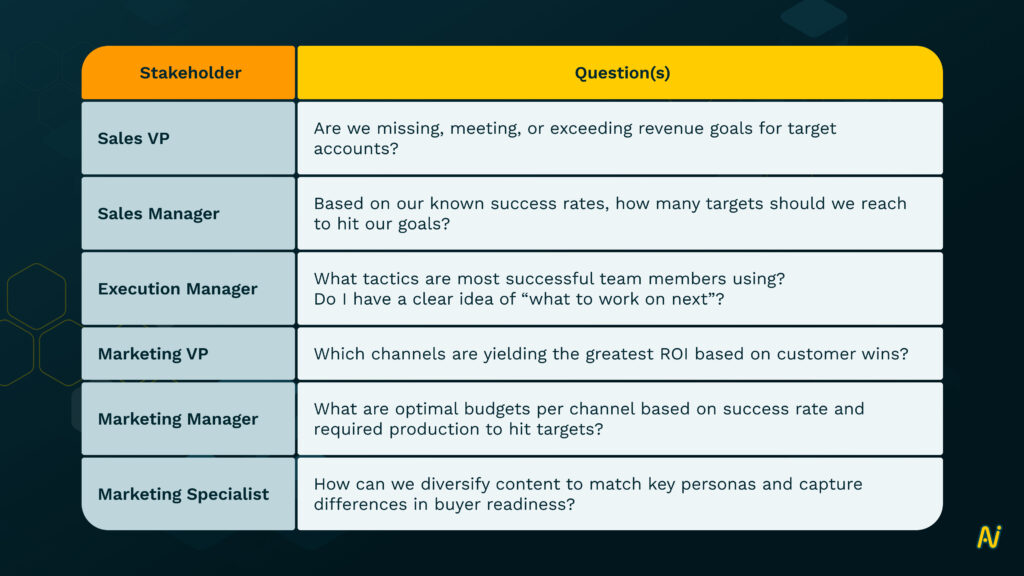
These questions will help you find the blind spots and leverage proven methods like Rumsfeldian Knowledge Matrix or 3VC. The Rumsfeldian Knowledge Matrix places gaps in four categories and maps what you know and don’t know.

Moving on to the 3VC analysis (Volume, Velocity, and Value), you can analyze the sales pipeline and identify the gaps adversely affecting revenue.
Next, you can list down the existing processes across the organization. A process audit includes looking at your teams’ approach to, for example, lead scoring. Using a process audit, you can learn more about how inbound marketing works, the system and strategies, the connectivity of disparate systems across channels, and more.
A growth mindset is imperative to close gaps and improve the buyer journey. View the current gaps and challenges as learning opportunities, and focus on framing a clear plan to generate predictable revenue.

Checklist for “Phase 1: Discovery”
✓ Identify stakeholders, including VP, managers, and execution specialists
✓ Prepare interview questions for the stakeholders, both at the organizational and individual level
✓ Uncover gaps in the customer journey process and map them to stakeholder insights
✓ Conduct process audits and document insights for the roadmap
Phase 2: Design
Once you’ve passed through the discovery phase, it’s time to move on to designing the RevOps roadmap with all the information you possess.
The must-have components of your roadmap are:
- Projects, aka strategic undertakings, to bring in predictable revenue
- The business impact of these projects on your organization
- Prioritize projects using a sequential order from those delivering maximum value to those with the lowest impact. Taking a gap-first approach is recommended by identifying customer gaps and measuring their impact.
- Preparing ship data for release as agreed upon by all stakeholders
- Information about teams or stakeholders involved in each project
Start designing your RevOps roadmap by laying down objectives, establishing timelines, and delegating work.
a. Objectives
Using insights from Phase 1 (discovery), you can map out short- and long-term objectives across all revenue teams, tying your goals together. These objectives can be short and straightforward (quick wins), cross-functional (encompassing multiple teams), or comprehensive (longer-term strategic planning).
To begin, layer your interview insights over the buyer journey for your organization. This, along with clean data, will help create a complete picture of the gaps and lead back to more quantitative goals.
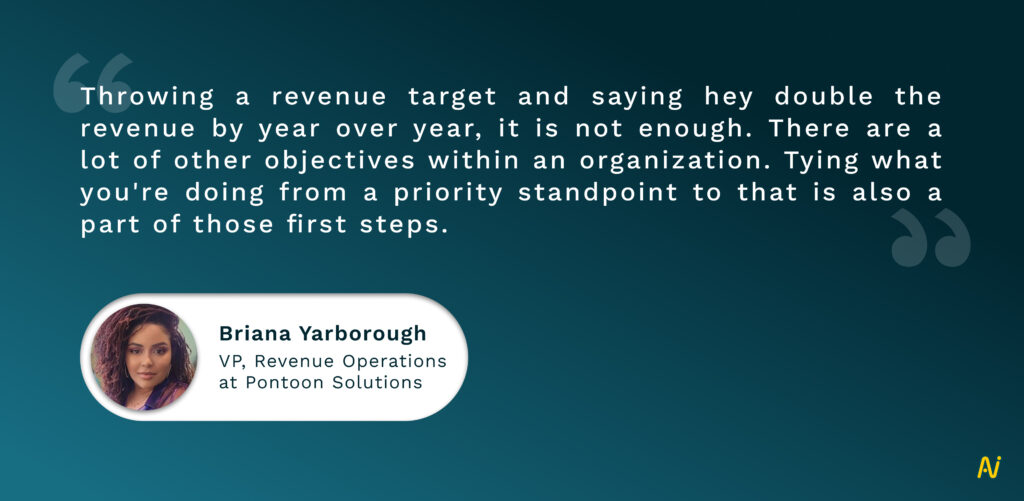
For example, you can use CRM to track won or lost deals. Dive into the system for comprehensive information on contact data and deal health. If a deal is going sideways due to a lack of multithreading, you could list this as a gap in the RevOps process.
Leverage insights from the discovery phase and align them with company objectives to prioritize projects.
Again, it’s important to note that there’s no one-size-fits-all approach to setting goals. They will differ based on the organization’s maturity of processes and systems.
b. Timelines
Without a clear deadline, any project or roadmap is doomed for failure.
Determine the amount of work required for each project and attach timelines to each target and delivery. Also, assign priority levels based on these timelines.
Break each objective into smaller, time-bound milestones. It makes them more accessible and achievable for teams. Ultimately, small wins translate into significant triumphs.
While defining a timeline, account for possible derailments, risks, and interdependencies that could delay your achievements.
c. Delegate
Working in traditional teams and silos, an incorrect delegation of tasks isn’t unheard of. A RevOps roadmap changes this by bringing the 2 Es to the table – experience and area of expertise.
For instance, analyzing, defining, and strategizing marketing-related projects is best suited for a marketing leader rather than sales.
Revenue leaders work on the strategy to keep teams from losing clarity on projects. Simultaneously, execution specialists execute the strategy based on determined timelines in a way that brings in positive results.
During delegation, have the RevOps team oversee projects. It ensures accountability and encourages alignment, particularly when teams aren’t keen on working together.
Checklist for “Phase 2: Design”
✓ Determine objectives and develop projects
✓ Map business impact
✓ Prioritize projects based on impact
✓ Set timelines for execution
✓ Delegate tasks to teams or stakeholders
Phase 3: Align
A significant organizational transformation calls for company-wide alignment and comprehension of the “what” and “why” behind a RevOps roadmap.
Therefore, before executing the roadmap, removing any barriers between sales and marketing teams is important. Both teams need to march in lockstep toward a common goal.
And it’s not just sales and marketing; all your stakeholders must be invested in the revenue operations process. They must align on all critical projects every single time, considering they have a stake in the business’s overall success.
Change can be intimidating, and teams could be wary of future things. Kicking off RevOps with an approachable and easy-to-understand visual map makes the process more seamless. It excites and encourages teams enough for them to work towards improving the buyer experience.
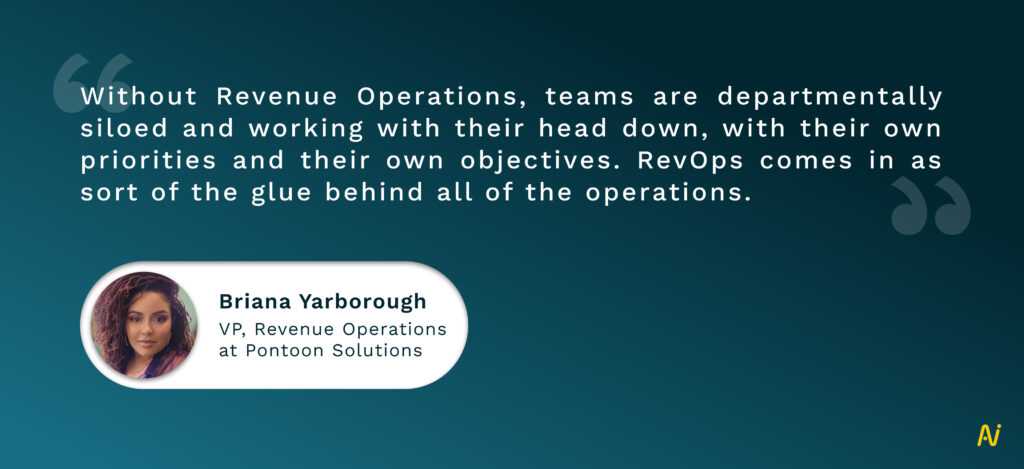
Checklist for “Phase 3: Align”
✓ Strategy: Defined goals and operating principles that form the crux of the roadmap
✓ People: Alignment of all revenue teams, including sales, marketing, and other stakeholders
✓ Process: Tracking and integrating all processes – automated and manual
✓ Data: Listing data sources and upholding data quality
✓ Analysis: Setting up KPIs and metrics to measure success
✓ Technology: Deployed across revenue teams for improved performance of revenue operations
Phase 4: Execute
A RevOps roadmap helps businesses reconstruct revenue pipelines with significant efficiency gains, organizational efficacy, customer centricity, cost savings, and growth if executed well.
It’s this phase that determines if the roadmap becomes:
- An effective reference document of the RevOps process, keeping both frontline and backend teams highly focused on revenue generation
OR
- A dumping ground for inbound requests from across the organization, abandoned by teams only a few weeks into implementation
Executing a RevOps roadmap isn’t a one-time event but a continuous process. It involves constantly updating the roadmap as projects move forward and new developments come to light. Stakeholders must also be involved in the process throughout its execution to ensure that their needs are met, and they can focus on the ultimate goal – revenue success.
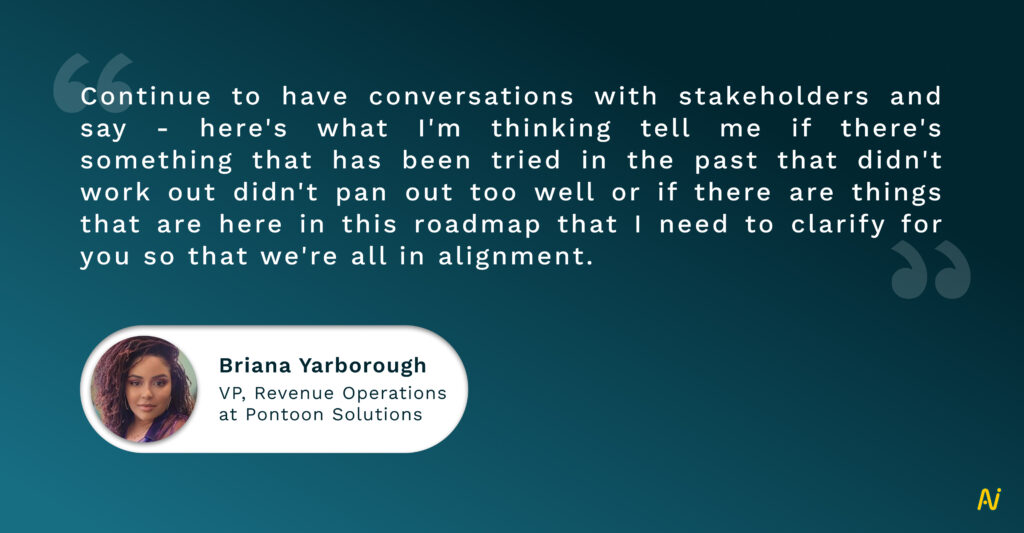
Hold quarterly or monthly strategy meetings to plan projects for the next quarter and keep refreshing your roadmap. Manually monitoring and tracking all projects across teams could be time-consuming.
However, given RevOps’s growing importance, several project management or RevOps tools are now available. Use the best-suited one for your organization to execute the roadmap better.

Stakeholders and teams could also have queries popping up during the execution. Utility meetings come in handy to revisit the roadmap and update it, resolve queries, and maintain clarity of the objectives at all times.
Checklist for “Phase 4: Execute”
✓ Update: Keep the roadmap fresh by updating project status and tracking against objectives
✓ Plan: Hold quarterly strategy meetings to plan upcoming projects
✓ Clarify: Maintain clarity and resolve queries through utility meetings
✓ Automate: Improve execution with a RevOps tool best-suited for your business
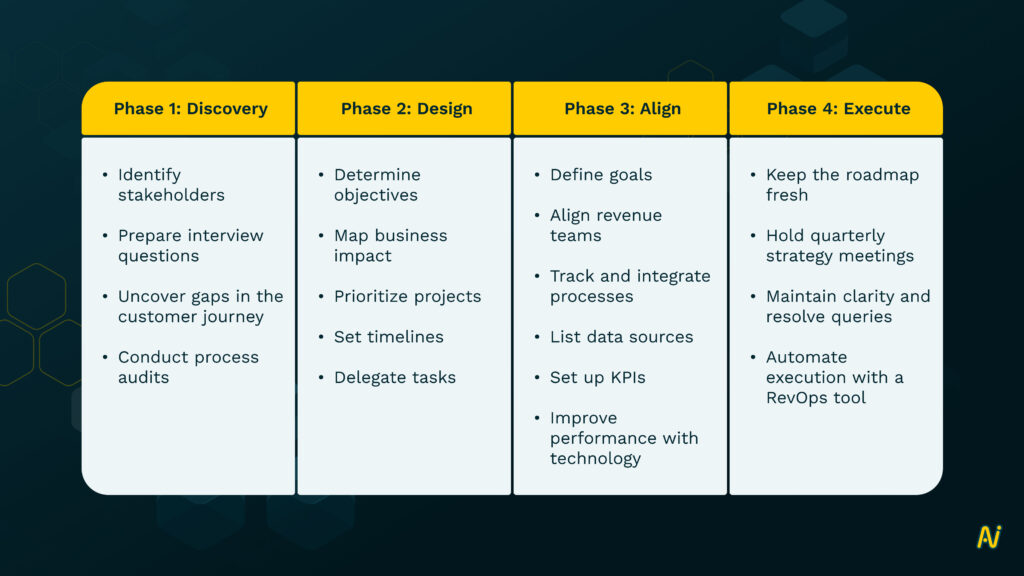
Clean Data Lies at the Helm of a Successful RevOps Roadmap
Modern businesses are zooming out and turning to RevOps as a holistic solution for increasing organization-wide, predictable revenue. Clean data and a CRM void of data leaks make this seamlessly possible.
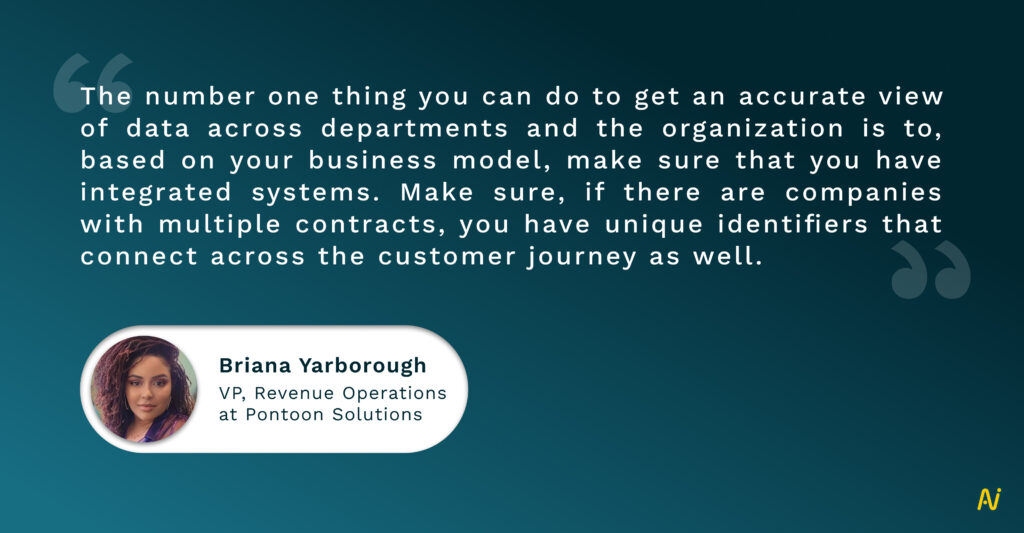
Getting an accurate view of data across all revenue generating teams is the first step to aligning and executing a successful RevOps roadmap. This requires having a single technology spine that allows for a free flow of data and insights through various stages of the buyer journey.
We hope this guide helps you create your own RevOps roadmap. If you’d like more RevOps resources like this, do subscribe to our podcast – The Revenue Lounge.
Here’s a recent episode:
About Nektar
Nektar, an industry-first RevOps platform, unifies data capture by automatically gathering and integrating full-funnel activity. It makes clean and accurate contact data available to all frontline teams. The platform secures data integrity and maintains hygiene for a true view of your sales pipeline and revenue intelligence.
Nektar further integrates the revenue tech stack to amplify ROI. It gathers data from multiple channels, including email, calls, Slack, and more.
But why stop there? We also consolidated our ultimate guide to RevOps roadmap ebook after speaking to 150+ revenue leaders. In this free guide, you’ll find templates, checklists and plans on how to build your very own RevOps roadmap!
